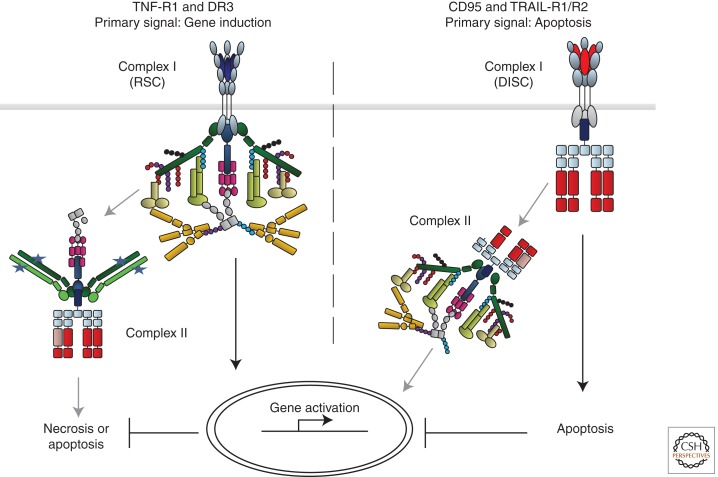Figure 4.
Comparison of CD95/TRAIL-R1/R2 and TNF-R1/DR3 signaling. For both the proapoptotic CD95 and TRAIL systems as well as the proinflammatory TNF and DR3 systems, the complex defined as complex I is the protein complex that forms at the plasma membrane and exerts the primary function of the respective receptor (i.e., apoptosis for CD95 and TRAIL-R1/R2 and gene activation via NF-κB and MAPK by TNF-R1 and DR3). The two primary complexes dissociate from the DD of the respective receptor and recruit additional proteins from the cytosol to form complex II, which triggers the respective secondary signal. In the case of CD95 and TRAIL-R1/R2 the second signal is gene activation via the NF-κB and MAPK pathways; in the case of TNF-R1/DR3 it is induction of necrosis or apoptosis. The signaling outputs of the respective secondary complexes are prevented or attenuated in case the respective primary complexes reach theirs.

